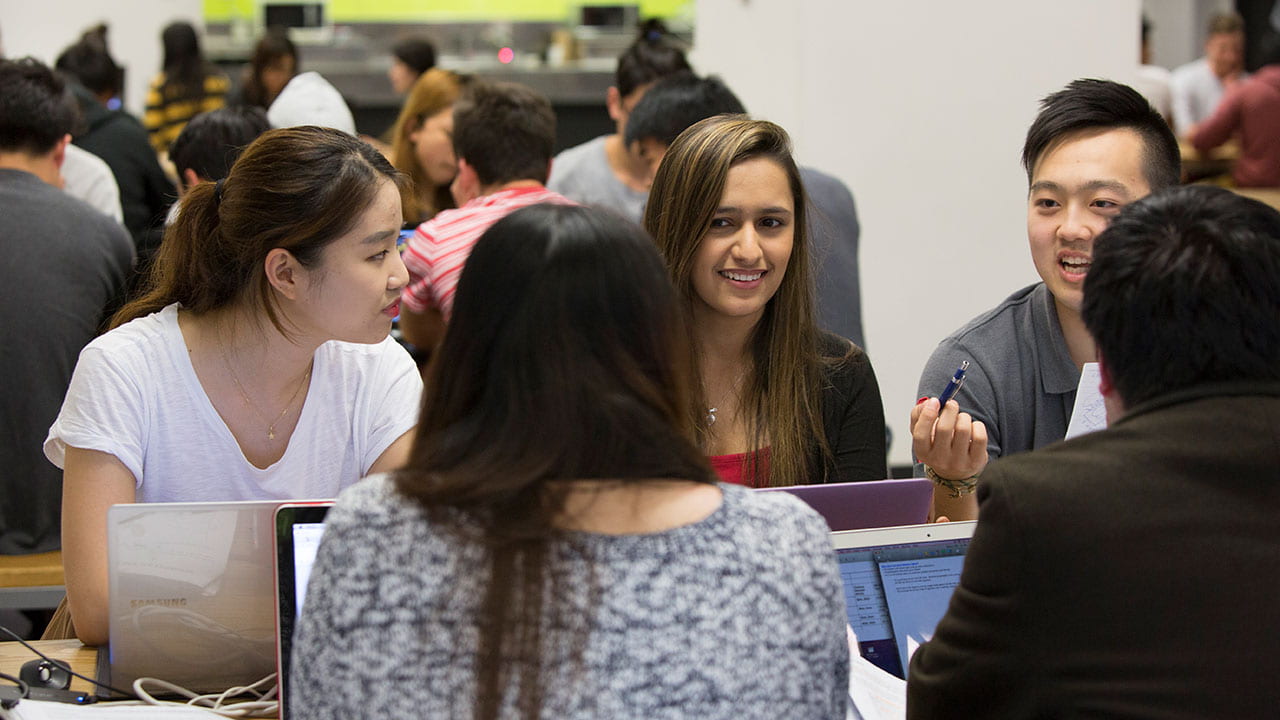Technology-enhanced learning: Collaborate
“Graduates of the University are expected to be able to establish a rapport and build collaborative relationships with individuals and groups.” — The University Graduate Profile, Communication and Engagement Capability 1
Why ‘do’ collaborative learning?
Collaborative learning can take place peer-to-peer or in groups of students. Research shows that educational experiences that are active, social, contextual, engaging, and student-owned lead to deeper learning.2 It includes discussion, practise, and production. Building on investigation and knowledge acquisition, learners take part in the process of knowledge building.

The benefits of collaborative learning include:
- Development of higher-level thinking, oral communication, self-management, and leadership skills.
- Promotion of student-faculty interaction.
- Increase in student retention, self-esteem and responsibility.
- Exposure to and an increase in understanding of diverse perspectives.
- Preparation for real life social and employment situations.
Small steps
Team-based learning and group work prepare students for real-work dynamics, ways of working and problem solving.
Collaborative learning, which includes sense-making among peers.
Peer-to-peer tutoring (students explain what they’ve learnt to each other).
Think-pair-share / write-pair-share.
Group brainstorming and problem solving.
Six hats technique for problem-solving activity in the classroom. Assigning each thinking style a colour serves as a visual cue to help students recognise the thinking skill they are using.
Fishbowl is a strategy for managing medium to large group discussions. Students are separated into an inner and outer circle. In the inner circle (or fishbowl), students have a discussion; students in the outer circle listen to and take notes.
Buzz groups are small groups of 3-4 students, formed to discuss a topic for a short period. These groups may be assigned the same or different topic to discuss. For example:
- how much they already know about a topic
- what they are not sure about
- what they want the lecturer to cover next
Jigsaw method is a collaborative group activity in which students are interdependent to achieve a common goal. One group becomes the “expert” on specific knowledge and then shares that with another group of students. This activity offers a way to help students understand and retain information while they develop collaboration skills.
TEL in practice – collaborate
Teaching Tip: Use GPT Vision to analyse workshop notes in real time
Dr Guy Bate used GPT Vision to elevate brainstorming sessions in his Innovation in Practice course for the Graduate School of Management’s Master of Management programme.
Teaching Tip: Use Gen-AI to deepen learning and spark creativity
Dr Courtney Ruha (School of Chemical Sciences) helps students connect chemistry to real life through creative, collaborative group projects using generative AI.
Insights: Relationship-building by integrating Māori epistemologies into Chinese language education
Associate Professor Danping Wang uses relationship-building to transform the way languages are taught.
Teamwork assessment with FeedbackFruits: Insights from Tertiary Foundation Course for Business
Curious about FeedbackFruits? See how its Group Member Evaluation tool can help create fair individual assessment in team assignments.
Page updated 25/08/2025 (stylistic changes)
- The University of Auckland. “Graduate Profiles.” Updated July 5, 2020. https://www.auckland.ac.nz/en/students/forms-policies-and-guidelines/student-policies-and-guidelines/graduate-profile.html. ↩
- Centre for Teaching Innovation, Cornell University. “Collaborative Learning.” Accessed November 15, 2022. https://teaching.cornell.edu/teaching-resources/active-collaborative-learning/collaborative-learning. ↩




